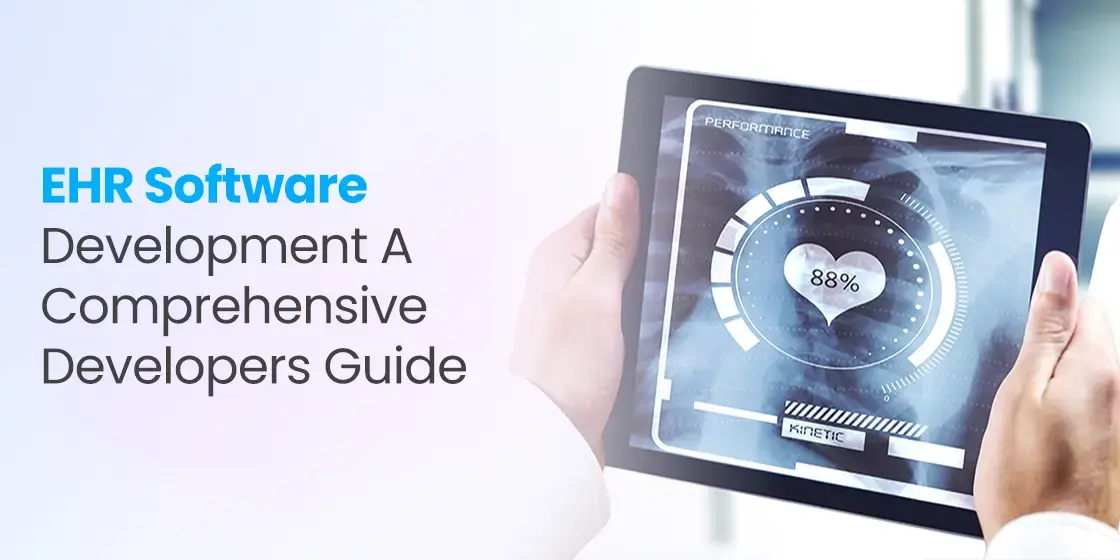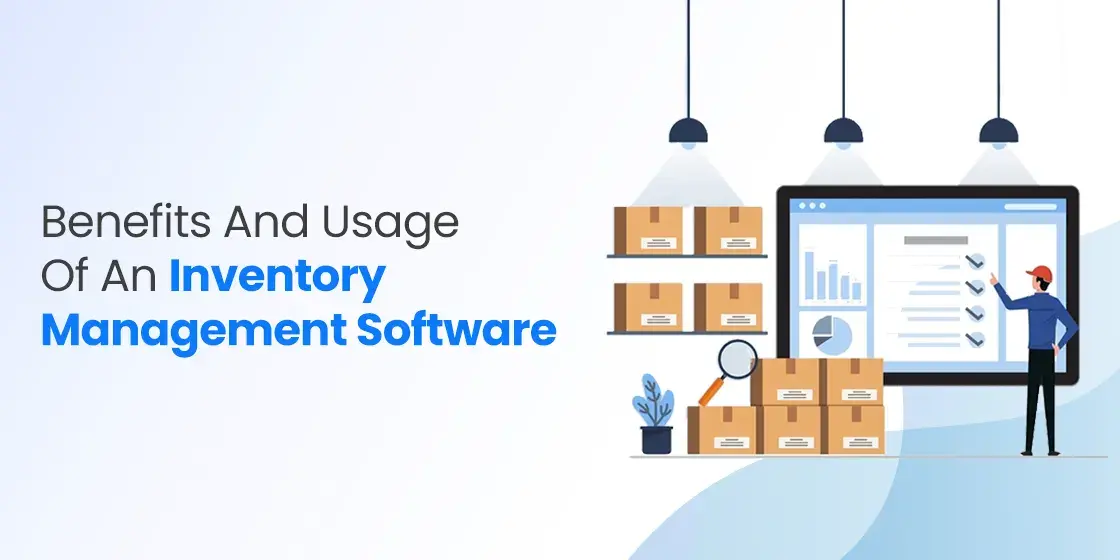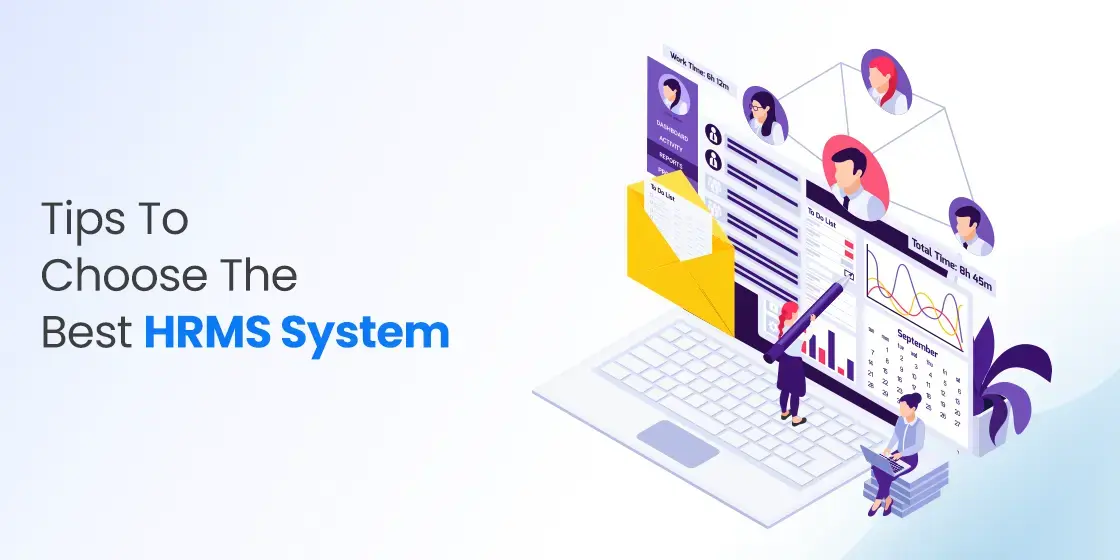Table of Content
Discover How and Why EHR Software Systems Are Improving the Healthcare Industry
The healthcare industry is undergoing a digital revolution, with Electronic Health Records (EHRs) playing a pivotal role in modernizing patient care. EHRs have transformed how healthcare providers manage patient information, from appointment scheduling and medication management to billing and claims processing. This digital transformation has not only improved patient care but also increased efficiency and reduced administrative burdens within healthcare organizations.
EHR systems are sophisticated software applications that require careful planning, design, and development. They must be robust, secure, and compliant with industry regulations such as HIPAA (Health Insurance Portability and Accountability Act) in the United States.
In this guide, we will dive into the intricacies of EHR software development, exploring its key components, and the crucial considerations for building successful and impactful EHR systems. We will also explore the development process used by major custom software development services to create EHR systems successfully.
Let’s begin.
EHR Explained – What Is It and the Role an EHR System Plays in Healthcare Today

Electronic Health Records (EHRs) are digital versions of patients’ medical records that contain a comprehensive record of their healthcare information. This includes patient demographics, medical history, medications, allergies, immunizations, lab results, and imaging reports.
EHR systems like AdvancedMD have revolutionized healthcare in the following ways.
Improving Patient Care
- Enhanced Communication: Facilitating seamless communication and information sharing among healthcare providers, improving care coordination.
- Reduced Medical Errors: Minimizing the risk of medication errors, duplicate testing, and incorrect diagnoses by providing access to accurate and up-to-date patient information.
- Improved Patient Safety: Enabling proactive identification and management of potential health risks.
- Increasing Efficiency and Productivity:
- Streamlining Administrative Tasks: Automating tasks such as appointment scheduling, billing, and claims processing, freeing up healthcare professionals to focus on patient care.
- Reducing Paperwork: Eliminating the need for paper records, reducing storage costs and improving workflow efficiency.
- Improving Revenue Cycle Management: Streamlining billing and claims processes, leading to faster reimbursement and improved revenue collection.
Enhancing Patient Engagement
- Providing patients with access to their health information, empowering them to take a more active role in their healthcare.
- Enabling patient portals for secure communication with providers and online appointment scheduling.
Types of Systems EHR Software Development Can Consist Of

EHR systems can be broadly categorized into several types based on their deployment and functionality. It is this versatility that makes EHR systems one of the best medical apps in the UAE and the West, in terms of usability.
The various types of forms that EHR software development can take shape into, include the forming.
Local Network EHR (On-Premises)
These systems are installed and maintained on the healthcare organization’s own servers. While offering greater control and security, they require significant upfront investment in hardware and IT infrastructure.
Web-Based EHR
These systems are accessed through a web browser, offering flexibility and accessibility. They can be hosted on-premises or in the cloud.
Partner with our software development specialists to pioneer custom solutions that drive your business forward.
Request Your Solution
Mobile EHR
Mobile EHR applications allow healthcare providers to access patient information and perform certain functions on their mobile devices, such as smartphones and tablets.
Cloud EHR
These systems are hosted on cloud servers, allowing for easy accessibility from anywhere with an internet connection. Cloud EHRs offer scalability, flexibility, and reduced infrastructure costs, serving as an example as to why your business should migrate to the cloud.
Examples include Epic, Cerner, and Athenahealth.
Personal Health Record Repository
These systems allow patients to maintain their own electronic health records, including medical history, medications, and immunization records. Patients can grant access to their records to authorized healthcare providers.
Must-Have Features That a Competent EHR System Should Have

Just like specific categories of software should have some core features that showcase the industry the software belongs to, AKA HRM software or CRM solutions, EHR software too should have some common basic features. A comprehensive EHR system must include several of the following essential features:
- Patient Demographics: Accurate and up-to-date patient demographics, including name, date of birth, contact information, and insurance information.
- Medical History: Detailed medical history, including past medical conditions, surgeries, allergies, and medications.
- Problem List: A list of current and past medical diagnoses.
- Medication List: A comprehensive list of current and past medications, including dosages, frequencies, and refill information.
- Immunization Records: A record of all vaccinations administered to the patient.
- Lab Results: Integration with laboratory information systems to access and store lab results.
- Imaging Results: Integration with imaging systems to access and view medical images (X-rays, CT scans, MRIs).
- Appointment Scheduling: A robust appointment scheduling system to streamline patient appointments.
- E-prescribing: Electronic prescription capabilities to improve medication safety and reduce errors.
- Billing and Coding: Tools for generating and submitting insurance claims.
- Reporting and Analytics: Generate reports on patient demographics, disease prevalence, and other key metrics.
The EHR Software Development Process – A Detailed Exploration

The development of a robust EHR system is a complex and iterative process that requires careful planning and execution, as well as performance metrics such as software development KPIs. Key stages in the EHR software development process includes the following steps. Let’s take a look at them in greater detail.
Ideation
The first step to the EHR software development process is planning out the idea of the system. This is not just the first, but also the most crucial step of the entire process.
- Define project scope, objectives, and target users.
- Conduct market research and competitive analysis.
- Gather requirements from stakeholders, including physicians, nurses, and other healthcare professionals.
- Create detailed user stories and use cases.
- Develop a project roadmap and timeline.
Creating the EHR System Prototype
Once you are done with the ideation, the next step is to create a sort of proof of concept. That is also called creating a prototype, where you turn your idea into a realistic product to see what works, what doesn’t, and what needs to be changed.
- Design and develop a prototype of the EHR system to visualize the user interface and functionalities.
- Gather feedback from stakeholders and iterate on the design based on their input.
Designing and Developing the EHR System
Once you have created a successful prototype, the next step is to turn it into an actual commercial product. Here is where you start focusing on the industry standards and practices for the EHR software development and design.
- Develop the core functionalities of the EHR system, including patient registration, data entry, order entry, and results reporting.
- Integrate with other healthcare systems, such as pharmacy systems and laboratory information systems.
- Ensure compliance with relevant regulations, such as HIPAA.
Testing it for Errors and Compliance
Once the product is designed and developed as per company satisfaction, the next step is to test it for quality standards, which also requires testing it for bugs, compliance, or other issues.
- Conduct rigorous testing, including unit testing, integration testing, and user acceptance testing.
- Identify and fix bugs and issues.
- Ensure the system meets all functional and non-functional requirements.
Launch of the EHR System and Maintenance
Once the HER system is tested thoroughly, the final step is to launch the product in the market, and then work on maintaining it with the times. This step is where the HER software development process ends, with the ongoing maintenance activities being termed as operations rather than as part of the project itself.
- Deploy the EHR system in a controlled environment.
- Provide training to healthcare professionals on how to use the system effectively.
- Monitor system performance and address any issues that arise.
- Provide ongoing maintenance and support, including regular updates, bug fixes, and security patches.
- Continuously improve the system based on user feedback and evolving healthcare needs.
Conclusion
EHR software development plays a critical role in modern healthcare by improving patient care, enhancing efficiency, and reducing costs. By carefully considering the needs of healthcare providers and patients, and by leveraging the latest technologies, developers can create robust and user-friendly EHR systems that transform the delivery of healthcare. As the healthcare industry continues to evolve, the demand for innovative and sophisticated EHR solutions will only continue to grow.

Empower your digital journey with StruqtIO - Your dedicated partner for cutting-edge custom software development, innovation, and digital transformative solutions. Harness the power of technology to elevate your business and redefine your digital landscape today.


